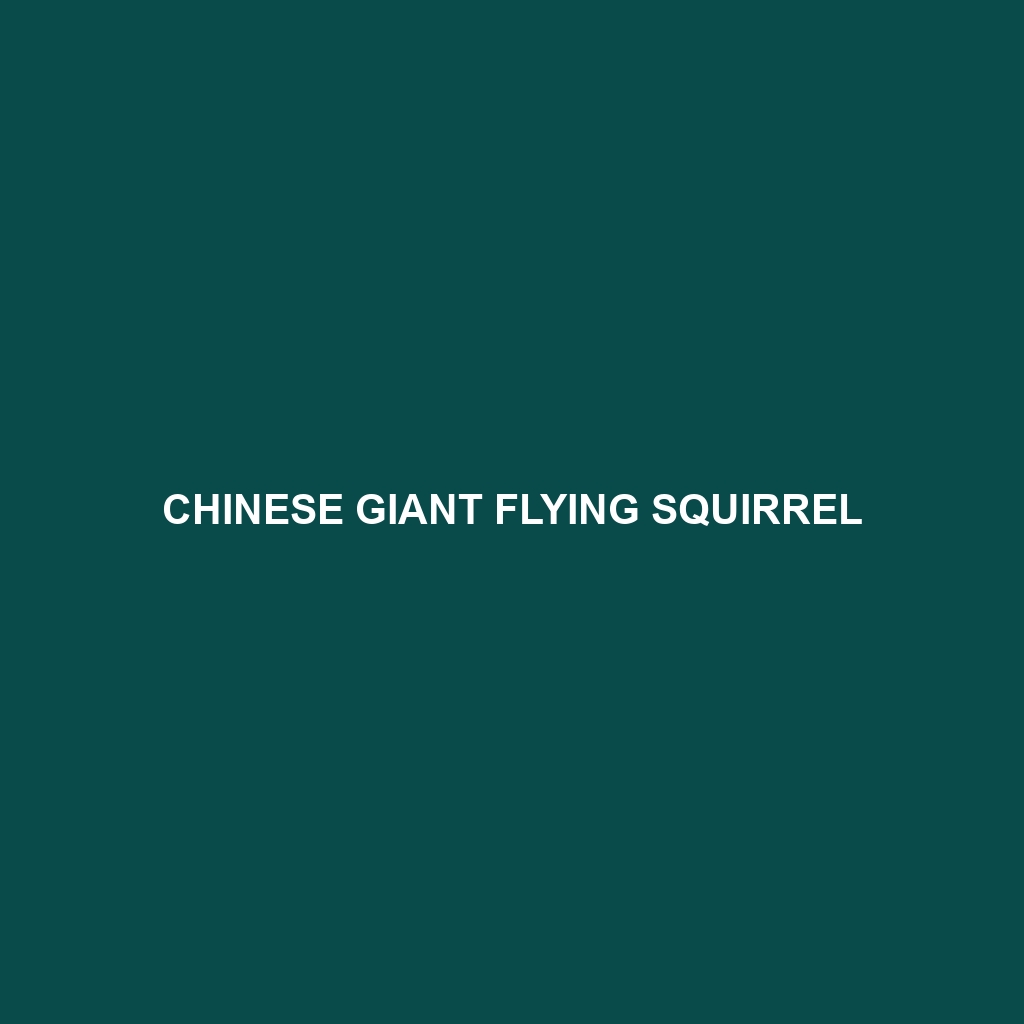Species Description: Chinese Giant Flying Squirrel
Common Name: Chinese Giant Flying Squirrel
Scientific Name: Petaurista philippensis
Habitat
The Chinese Giant Flying Squirrel is primarily found in the mountainous regions of East Asia, particularly in China, Vietnam, and Taiwan. This species prefers temperate and tropical forests, thriving in mature deciduous and coniferous woodlands. The presence of high canopy trees and dense vegetation is essential for their survival, providing ample shelter and glide paths.
Physical Characteristics
The Chinese Giant Flying Squirrel is one of the largest flying squirrels, measuring between 50 to 60 centimeters (20 to 24 inches) in body length, with a tail that can add another 60 centimeters (24 inches). They have a thick, soft fur that varies in color from grayish-brown to reddish-brown, often characterized by a lighter underbelly. Their notable features include large, flapping membrane (patagium) that stretches from their wrists to ankles, allowing them to glide adeptly through the trees.
Behavior
Chinese Giant Flying Squirrels are primarily nocturnal, being most active during the night. They are known to be social animals, often residing in family groups. Their remarkable gliding ability lets them travel distances of up to 150 meters (490 feet) from tree to tree in search of food and shelter. Additionally, their communication involves a range of vocalizations, particularly chirps and whistles, when interacting with each other.
Diet
The diet of the Chinese Giant Flying Squirrel mainly consists of fruits, nuts, and leaves. They are known to prefer the seeds of various tree species, including oaks and pines. During some seasons, they may also consume flowers and bark. Their role as seed dispersers is vital for forest regeneration, as they help in spreading seeds across their habitat.
Reproduction
The breeding season for the Chinese Giant Flying Squirrel typically occurs in late winter to early spring. After a gestation period of about 40 to 50 days, females give birth to one or two offspring, which are born blind and helpless. The young start to develop their gliding abilities within a few months and remain with their mothers for several months as they learn essential survival skills.
Conservation Status
Currently, the Chinese Giant Flying Squirrel is classified as ‘Vulnerable’ according to the IUCN Red List. This status is primarily due to habitat loss resulting from deforestation and human encroachment, which threaten their natural living environments.
Interesting Facts
– The Chinese Giant Flying Squirrel is capable of gliding for over 150 meters due to its impressive wing-like membrane, making it one of the most agile gliders in the animal kingdom.
– They can be distinguished by their large, expressive eyes, which aid their night vision and ability to navigate through the tree canopy.
Role in Ecosystem
As an important species within its ecosystem, the Chinese Giant Flying Squirrel plays a key role in forest ecology. By feeding on fruits and seeds, they contribute to tree growth and regeneration, thus maintaining biodiversity. Additionally, their presence helps support various predatory species, providing a food source for larger mammals and birds of prey.
